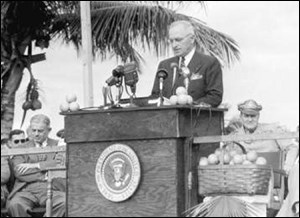
NPS Photo Everglades is but one of hundreds of national park units throughout the United States. The mission of the National Park Service is to conserve the natural and historical objects inside parks, while leaving them unimpaired for the enjoyment of present and future generations. Everglades National Park was authorized by Congress in 1934 to preserve the subtropical ecosystem and everything that lives within it. At the time, people were fascinated with the large number of wading birds that nested in the Everglades each year. The establishment of the park marked the first time federal land was set aside for its abundance of diverse plant and animal species rather than for its scenic views. Although Everglades National Park represents only the southernmost fifth of the historic Everglades, it remains one of the largest parks (1.5 million acres) in the country. An impressive collection of nationally and internationally significant resources is protected within its boundaries, including the largest stand of sawgrass prairie in North America, the largest protected mangrove forest in the northern hemisphere, the vast estuary of Florida Bay, and cultural resources chronicling approximately 10,000 years of human history. Everglades National Park is the only subtropical wilderness area in North America; by federal law, people must make no impact on the land and ecosystem. Still, the influence of man is increasingly being felt on every acre of the Everglades in the form of human-caused climate change. 
NPS Photo NEXT PAGE >> What We Know About Climate Change The Everglades Were Born From A Changing Climate << PREVIOUS PAGE |
Last updated: August 20, 2015

